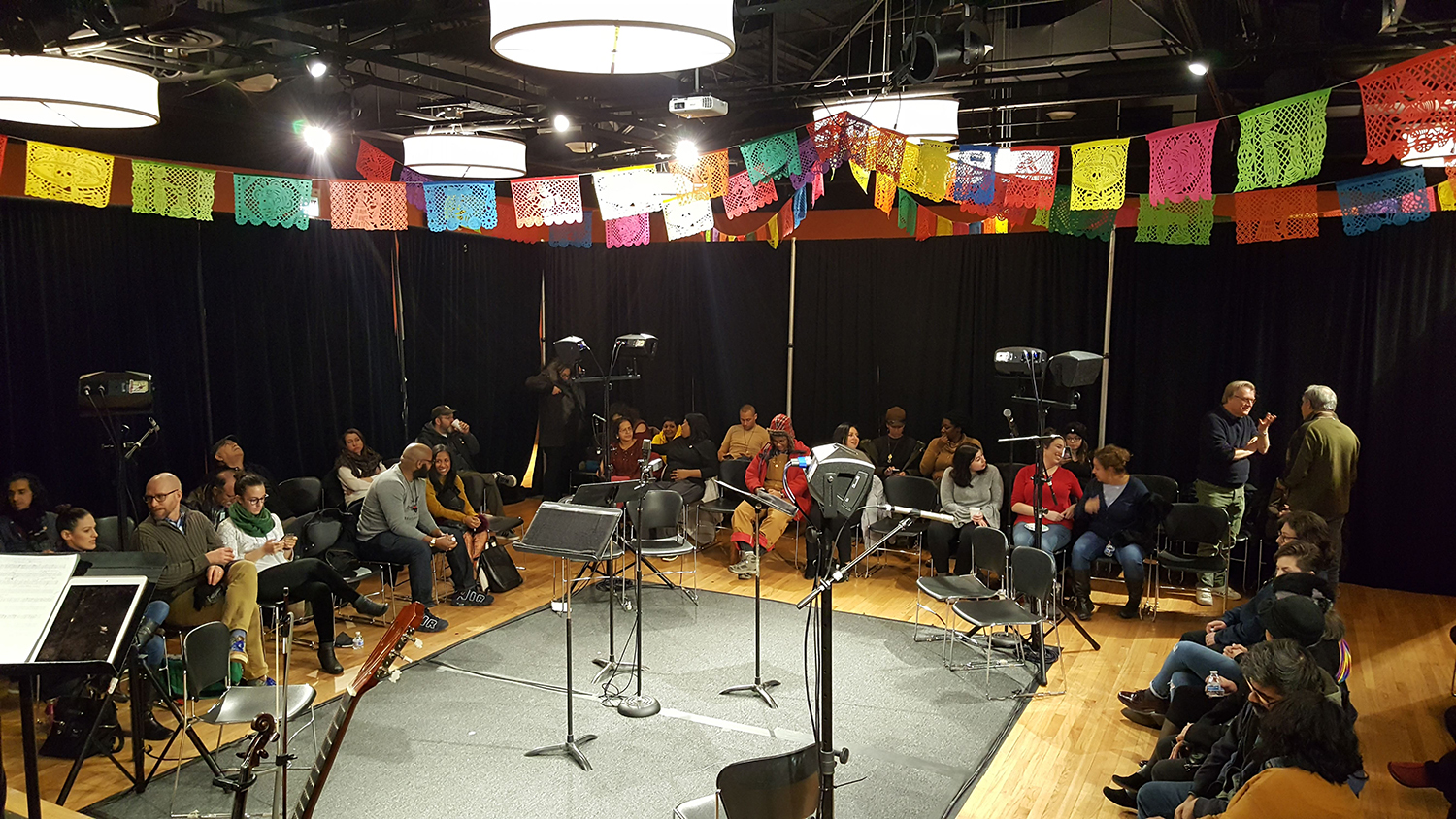Folktales bring communities together in new audio drama
March 11, 2019

A trickster rabbit uses his wits and gumption to survive; a young woman navigates through a world filled with monsters; and Greek King of Ithaca Odysseus travels on five new adventures.
These are all examples of stories recreated by the Make-Believe Association, a community of artists creating audio dramas designed to bring people from different backgrounds together, according to Founder and Executive Producer Jeremy McCarter.
“In a city with theatrical vibrancy, and the audio and radio legacy of Chicago, there was a way to put the two together,” McCarter said. “We combined [it] in a way that is designed to have a real social benefit.”
There are currently three different audio story adaptations: “Lost Books of the Odyssey,” “Bruh Rabbit” and “Brava,” all centered around the theme “Grown Folks Fables.”
“If the purpose of the company is to get different kinds of people into a room together to talk with each other, then the richest conversation would be one that forced everybody to travel some imaginative distance,” McCarter said.
Episodes are recorded in Chicago with live audiences to encourage discussion, according to its website. The newest episodes, “The Lost Books of the Odyssey” and “Bruh Rabbit,” were recorded at the Harold Washington Public Library, 400 S. State St.
“Any public space that invites a lot of different kinds of people to share an experience and do something together is an asset to American life,” McCarter said. “You can’t have a democracy unless you have opportunities for people to engage in conversation and debate in face-to-face settings.”
The first episode recorded was “Brava,” a Mexican folktale about a girl’s journey through a land filled with monsters. Writer Nancy García Loza said she saw many red flags in the original tale, such as the Western undertones and the heavy influences from Disney films. She wanted to adapt the story to center around the young girl’s will to live and make it relatable to a wider audience.
“Brava” was recorded in Pilsen at the National Museum of Mexican Art, 1852 W. 19th St., because of its rich Latinx community.
The space is accessible to community residents who they want to connect with through the audio dramas, García Loza said. She added that it made sense to use a space that is both beautiful and significant historically and culturally.
In the episode, there is a “corrido,” an old song tradition from Mexico used for telling stories or the news, García Loza said. Many of the original corridos are tales of femicide, she said.
“I was able to list off a dozen corridos about women that were all [cautionary] tales and about the murders of women,” García Loza said. “Not only do [we] need a new story, we need a new song.”
McCarter said the most important aspect of the Make-Believe Association is collaboration. Every script is written collaboratively, and there are many people working on the project, from the sound team to the writers to the audience, he said.
McCarter will be speaking with Columbia students in the “Oral Traditions” course March 12 taught by Associate Professor Erin McCarthy.
McCarthy said she is interested in discussing collaboration with the association because the concept sometimes frustrates students.
McCarthy wants to introduce her students to audio drama to teach them about adapting and updating stories.
“[I want students] to see how [Make-Believe] is taking stories and looking at them, asking questions and getting people to think and have a conversation and a dialogue in a different way,” McCarthy said.
When released, the season finale will feature a one-act adapted story, “What Use are Flowers?” by Lorraine Hansberry. In total, season one will feature six episodes.
“Audio storytelling is incredibly rich. It engages your imagination in a way that plays and movies don’t,” McCarter said. “Make-Believe stories reflect the culture of Chicago, and it’s fascinating and also great fun to listen to people hash out what they think a story might mean.”







